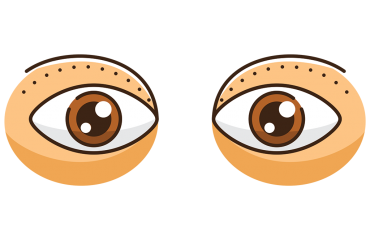A face lift is a rejuvenation procedure for the entire face, its upper, middle and lower sections, including the neck. Usually people in their 50ies ask for a face lift which can be combined with peeling and fat injections. A facelift should not deviate from the appearance of the patient’s younger self. A different look may be upsetting for both the patient and their social environment.
Frequently asked questions about face lift:
Who is a good candidate for a face lift?
Persons over 50 years of age with pronounced signs of ageing. Their health must permit the procedure; high blood pressure must be controlled with medication.
How is a face lift performed?
The procedure often begins with liposhaping (link). The patient’s own fat tissue is harvested from suitable sites, purified and re-injected to restore lost volume around the eyes, in the midface, in the nose-mouth-line, the marionette line and, if required, the lips. In the upper face, the forehead is tightened, and the brows are lifted. The intervention may be performed with incisions in the temple region or endoscopically. Next follow the eyelids. Endoskopic surgery of the midface is performed through incision in the lower lid. For the lower part of the face an incision is made in front and behind the ear; it may be extended into the scalp. Excess skin is removed. If the neck skin can be easily tightened, an incision on the front side may be sufficient. The underlying muscles, including those responsible for facial mimic, are tightened and shaped with suitably placed sutures. If this is not done, the face will soon return to its old shape. Fat deposits on the neck are removed by liposuction. To correct the Turkey gobbler neck, the neck part is opened with an incision under the chin and the muscles are tied together. The result is a better contoured neck. A receding chin can be improved with a chin implant; good results can also be achieved with fat injections. The marionette lines are smoothed with fat injections. Any unwanted fat depots along the jaw line are suctioned off. Finally, fine wrinkles on the lips (cigarette lines) are smoothed with microdermabrasion, and wrinkles around the eyes with chemical peeling.
What to do and what not to do before treatment?
Three weeks before an invasive / surgical treatment patient must stop smoking and taking aspirin. In the last week, patients must stop taking any anticoagulant (“blood-thinning”) medicine.
The following substances are also prohibited:
- pain killers such as Apranax, Voltaren and Vermidon (alternative brand names are Minoset and Novalgin)
- multivitamin tablets containing ginseng, ginkgo biloba and coenzyme Q,
- green tea, herbal products containing linseed, sour cherry stalks, tomato seeds
- all diet products.
Does the procedure require anaesthesia?
A face lift is performed in a clinic under general anaesthesia or under strong sedation.
How long does the procedure take?
A face lift takes about 3 hours; if it is combined with eyelid tightening, the whole procedure can take up to 5 hours.
Is the procedure painful?
A face lift is not painful. It may be accompanied by a feeling of tightness and pressure. Patients are usually more concerned about swelling and bruising. Overall, the procedure is painless.
What happens after the operation?
After a face lift, patients stay in the hospital overnight. The next day, the drains are removed. They can take a bath 48 hours later. The sutures are removed after 6 days. However, it takes up to 3 months until the face has acquired its final shape. The period depends on the scope of the intervention and skin thickness. Like with all other face operations, patients are strongly advised to avoid direct exposure to sunlight for the next 3 months.
What problems can occur after the operation?
Swelling and bruising are normal and temporary side effects. Bleedings are a serious complication. Patient must, therefore, discontinue any medication that affects blood coagulation. High blood pressure must be reduced with suitable medicine. If all other means fail, postoperative bleeding must be stopped with surgical intervention. Persistent oedema may form on the neck, and it may take longer than expected before the neck is smooth and thin. The process can be supported with lymph drainage massage, radio wave and deep ultrasound treatment. In rare instances, neck and face operations can lead to lower lip paralysis and movement impairment. These side effects are usually temporary and resolve after a few days; sometimes, however, they continue for a couple of weeks.
The most feared complication is difficult scar healing, which affects mainly smokers, and excessive skin excision. Smokers are strongly advised to discontinue smoking at least for 3 weeks prior to the operation.
Are the results of the procedure permanent?
The surgery does not prevent the ageing process. A return to the pre-operation state is, however, impossible. How long the effect lasts depends on the method and the physical condition of the patient. In patients with thick skin, the skin will loosen up faster than in persons with fine skin.


